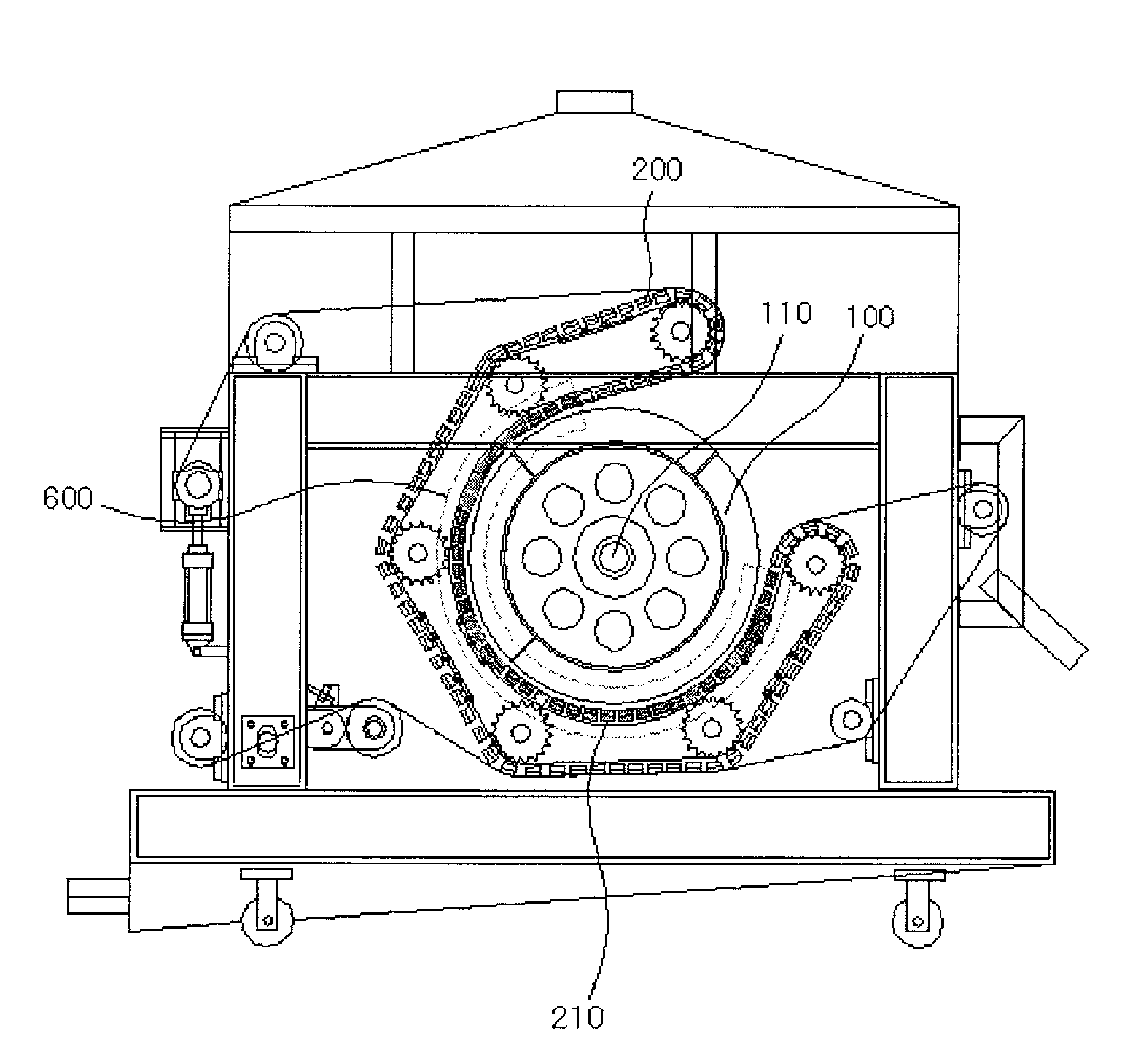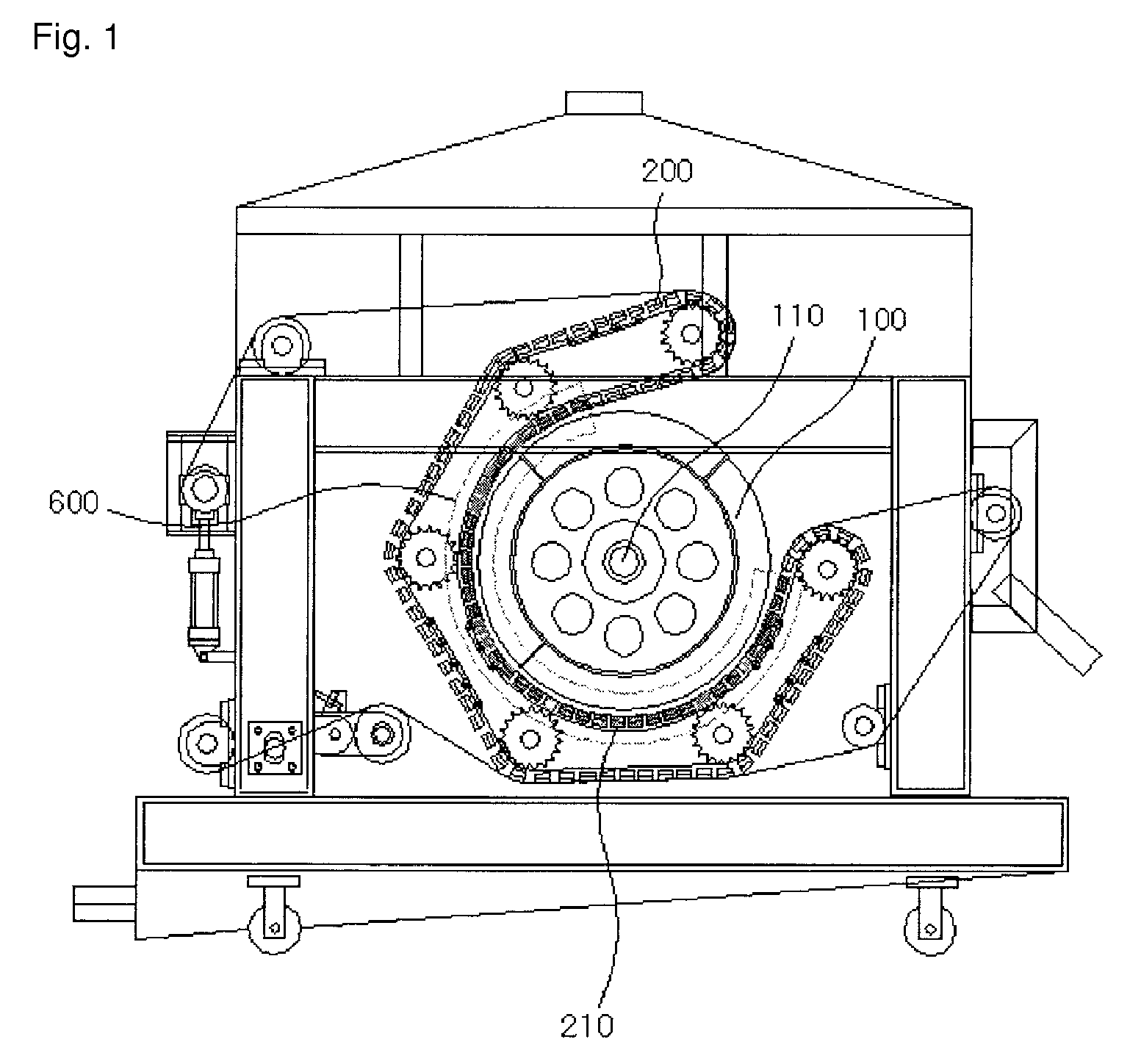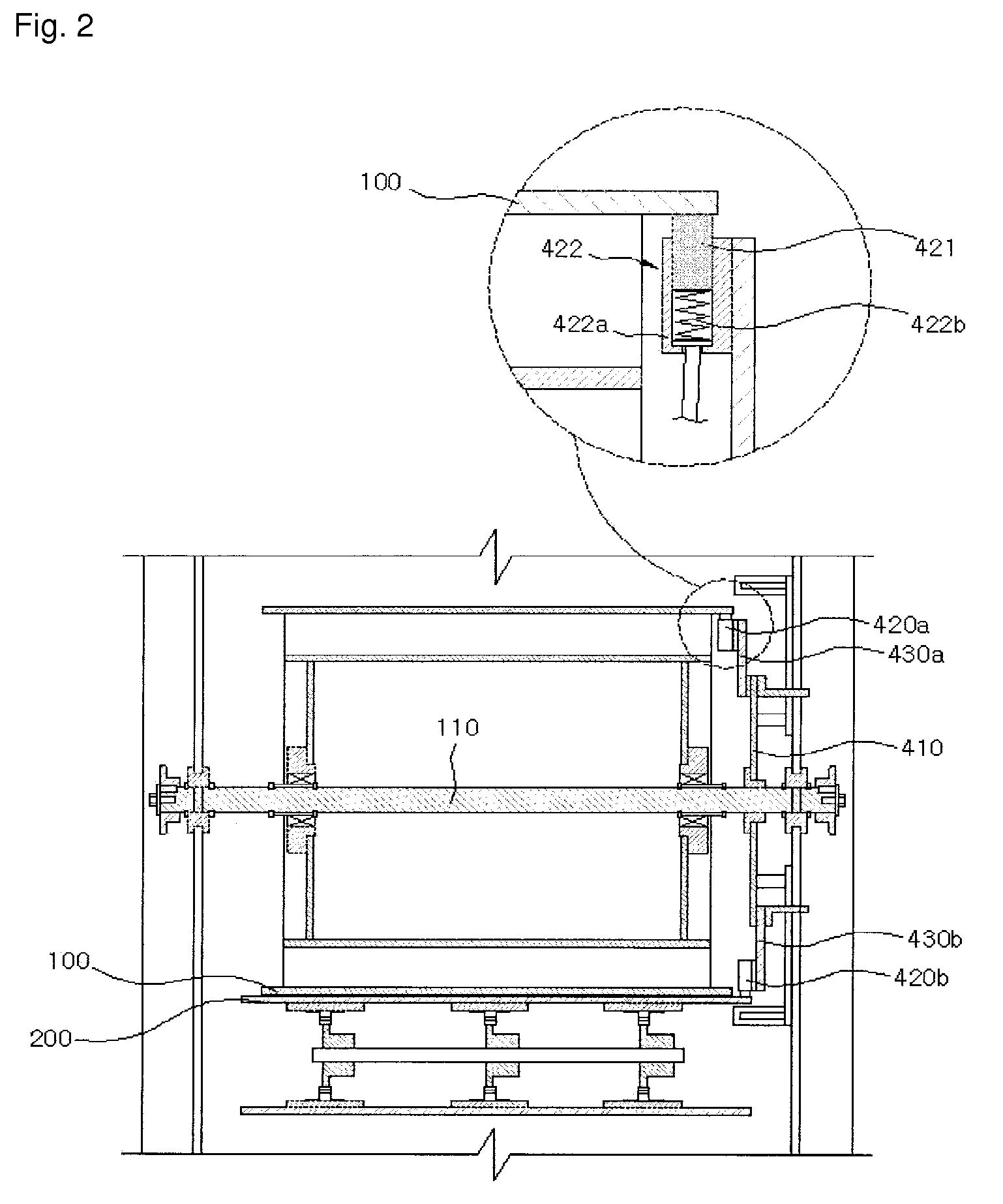Electronic osmotic dehydrator of electrophoresis style with a phase control using three-phase current
a technology of electrophoresis and electrophoresis style, which is applied in the direction of electrodialysis, separation processes, instruments, etc., can solve the problems of large power loss, large and small corrosion in the rotating drum, and the inability to control the strength of dc power variably, so as to reduce power consumption and reduce the effect of sludge volume and small volum
- Summary
- Abstract
- Description
- Claims
- Application Information
AI Technical Summary
Benefits of technology
Problems solved by technology
Method used
Image
Examples
Embodiment Construction
[0032]1: Input power 2, 2′: Variable DC power[0033]100: Rotating drum 110: Drum axis[0034]120: Multi-layer plate 121: Stainless plate[0035]122, 122′: Copper plate 123: Titanium plate[0036]124: Platinum-based coating agent 125, 125′: Fastening hole[0037]130, 130′: Bar 140, 140′: Tapping bolt[0038]200: Caterpillar 210: Caterpillar in a given section[0039]300: Filter cloth belt 400: DC power applying apparatus[0040]410: Fixing plate 420a, 420b: Electrode bar[0041]421: Brush 422: Slip ring[0042]422a: Case 422b: Spring[0043]430a, 430b: Electrode installing plate[0044]500: Phase control circuit[0045]510: Controller 520, 521, 522: SCR[0046]530, 531, 532: TRIAC 600: Dehydrating domain
BEST MODE FOR CARRYING OUT THE INVENTION
[0047]Hereinafter, the variable DC power applying structure and the improved structure of the rotating drum (100) featuring the present invention are described in detail.
[0048]In the first place, the power applying structure of the present invention is examined. As shown ...
PUM
| Property | Measurement | Unit |
|---|---|---|
| electrical conductivity | aaaaa | aaaaa |
| electric field | aaaaa | aaaaa |
| voltage | aaaaa | aaaaa |
Abstract
Description
Claims
Application Information
 Login to View More
Login to View More - R&D
- Intellectual Property
- Life Sciences
- Materials
- Tech Scout
- Unparalleled Data Quality
- Higher Quality Content
- 60% Fewer Hallucinations
Browse by: Latest US Patents, China's latest patents, Technical Efficacy Thesaurus, Application Domain, Technology Topic, Popular Technical Reports.
© 2025 PatSnap. All rights reserved.Legal|Privacy policy|Modern Slavery Act Transparency Statement|Sitemap|About US| Contact US: help@patsnap.com



